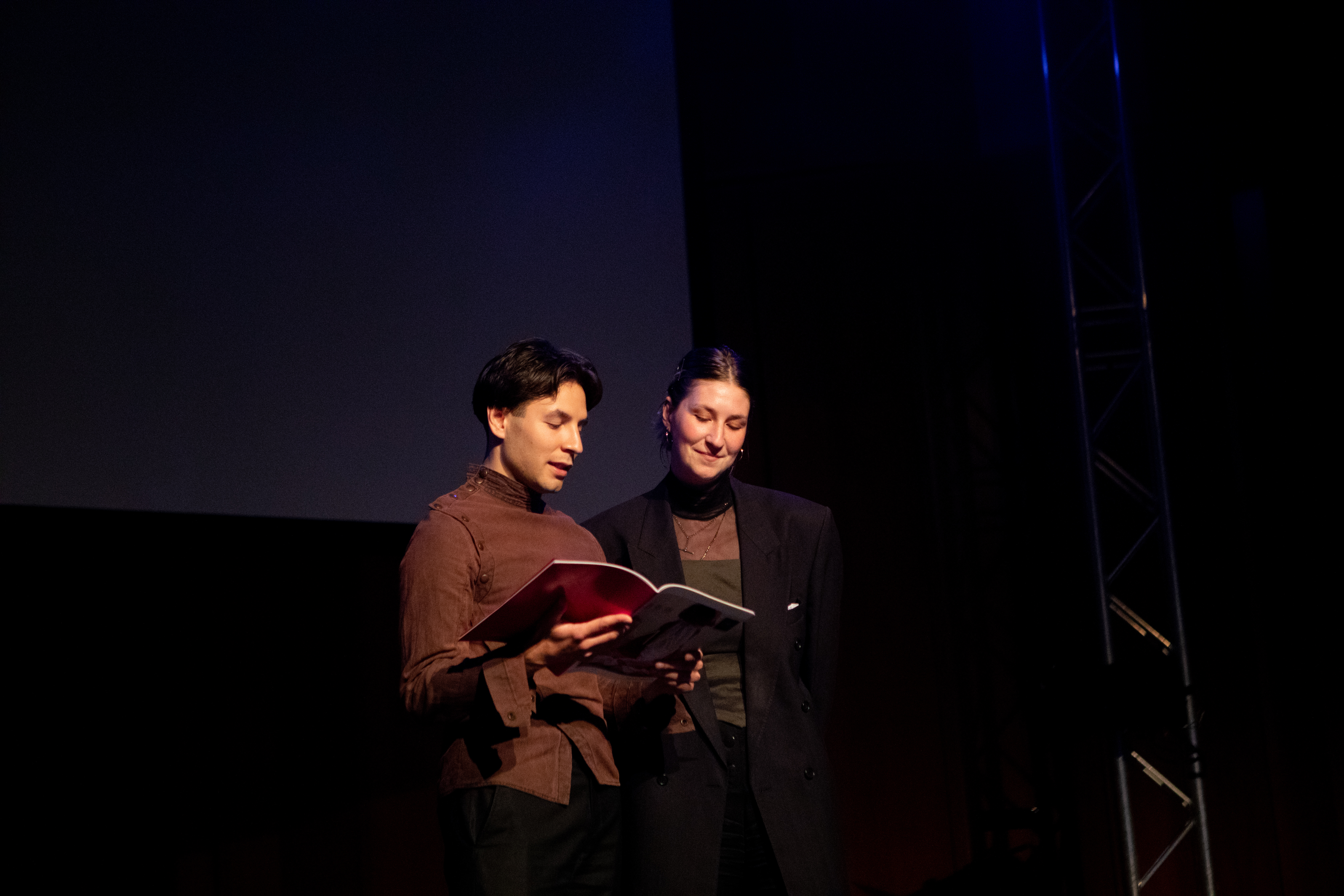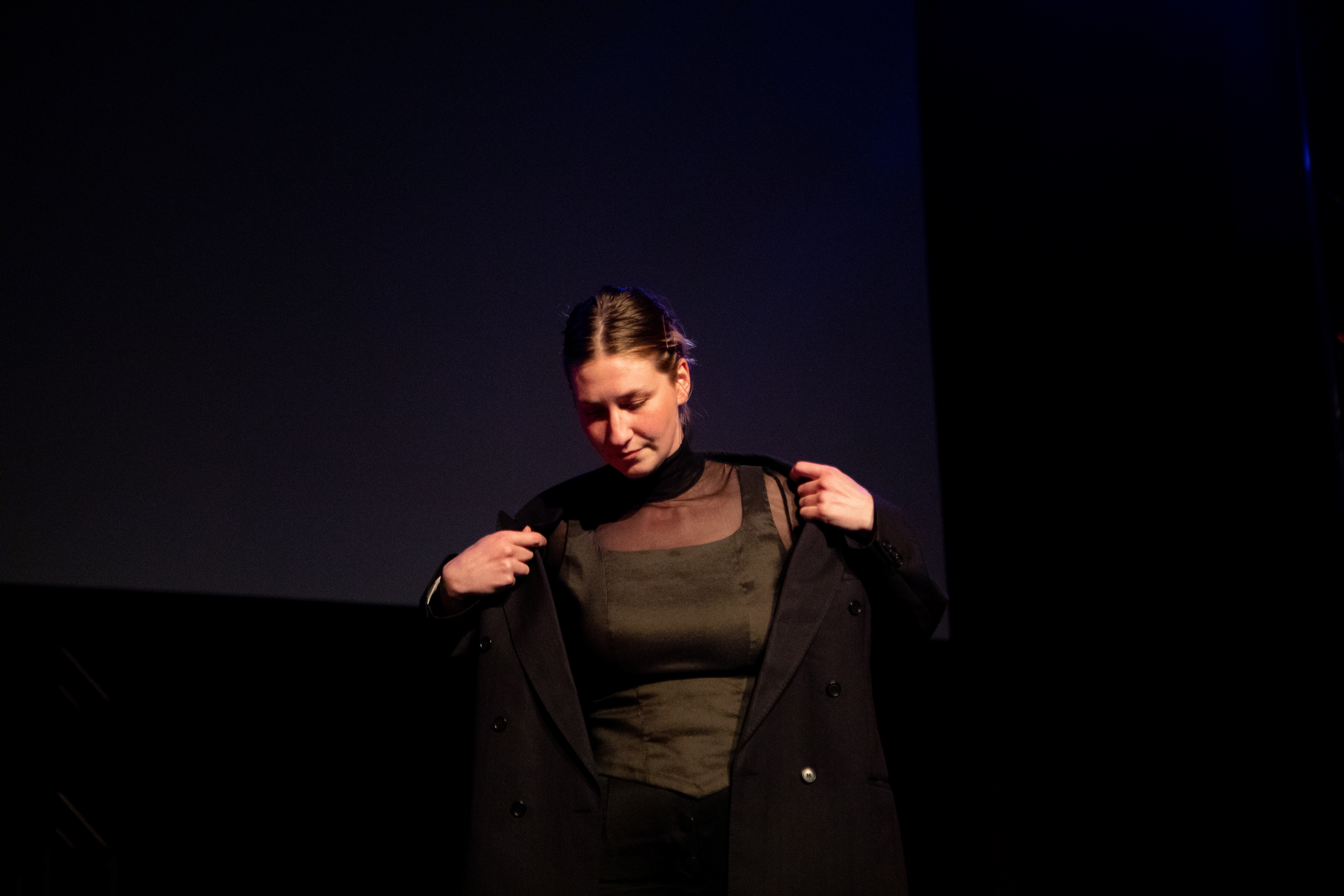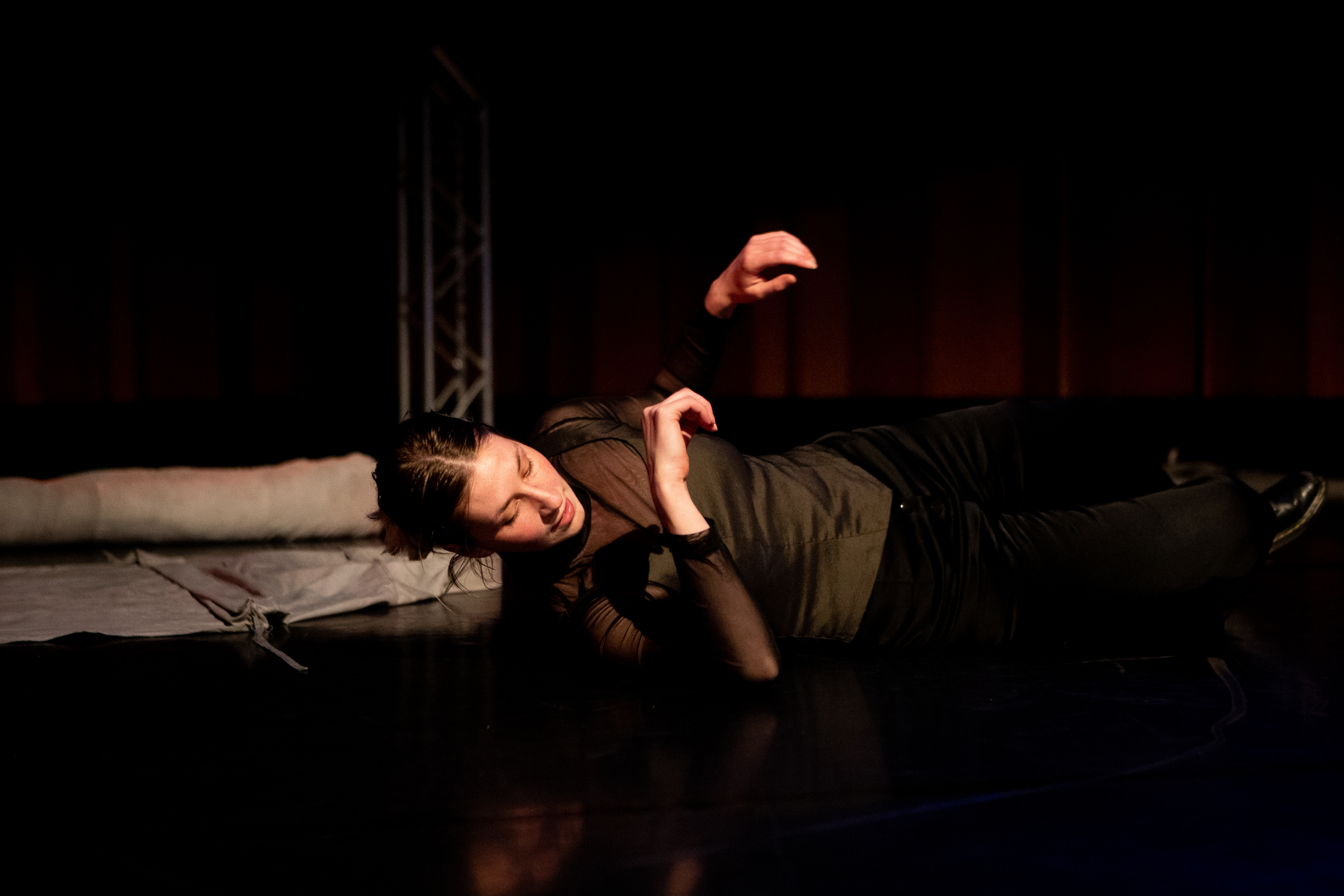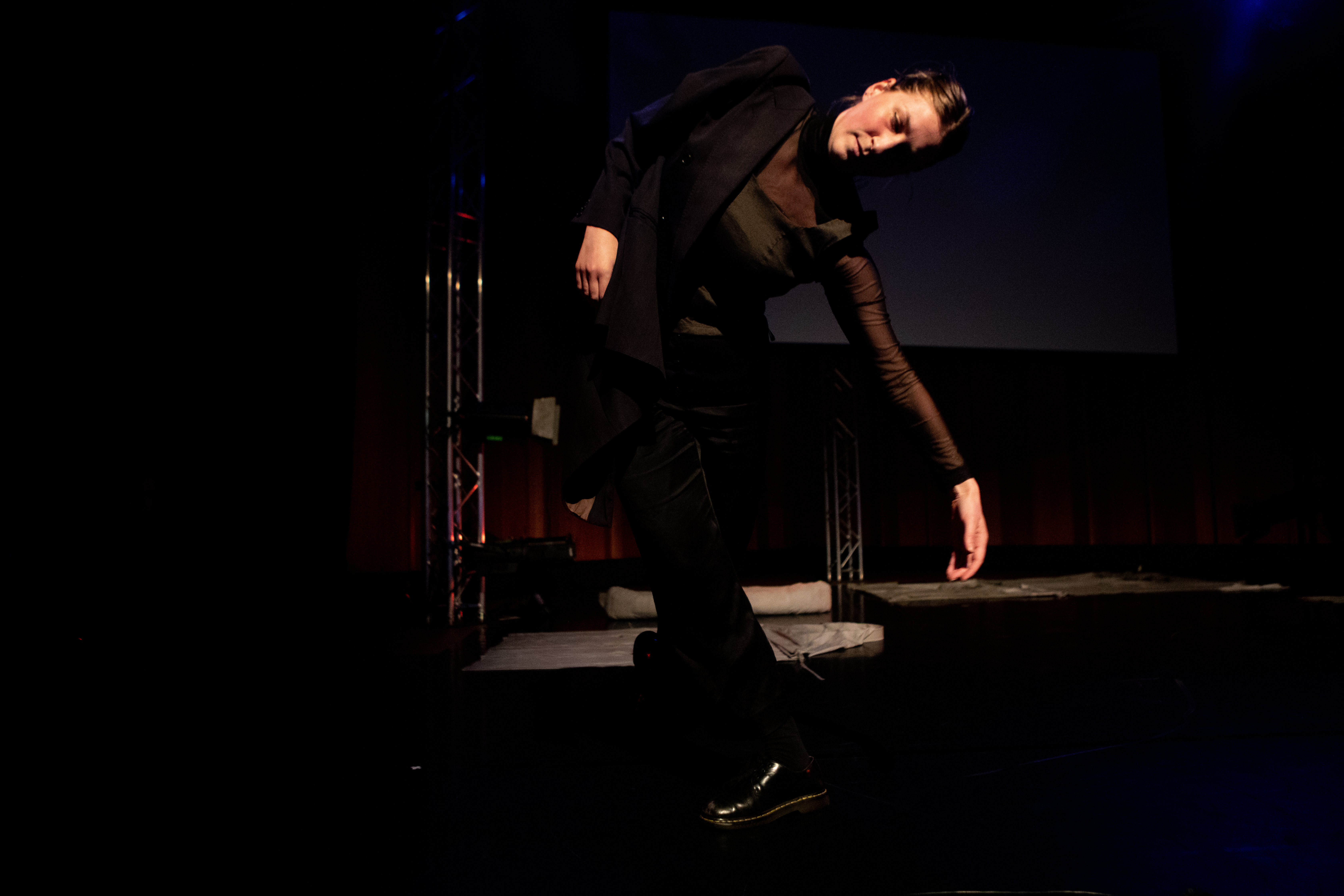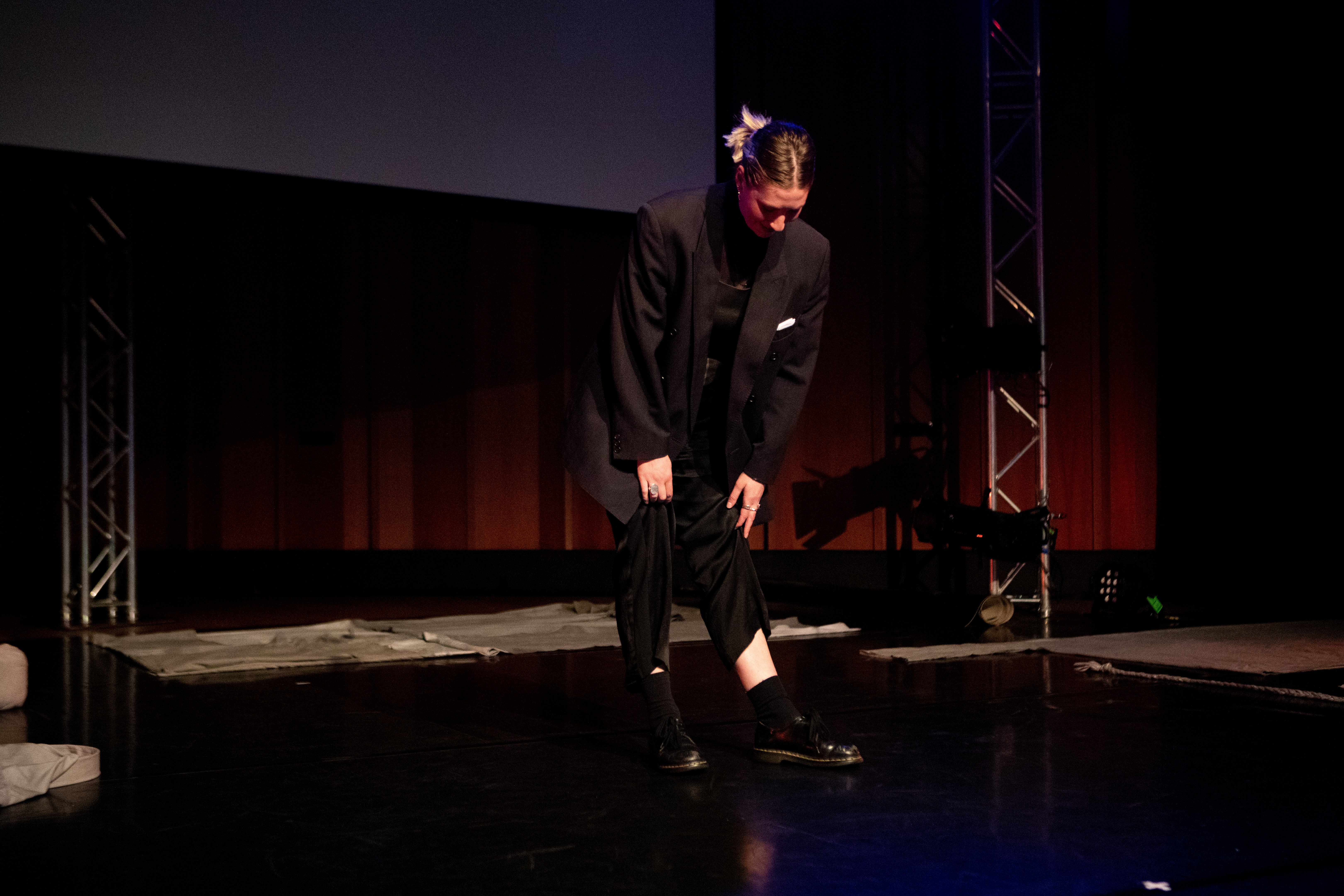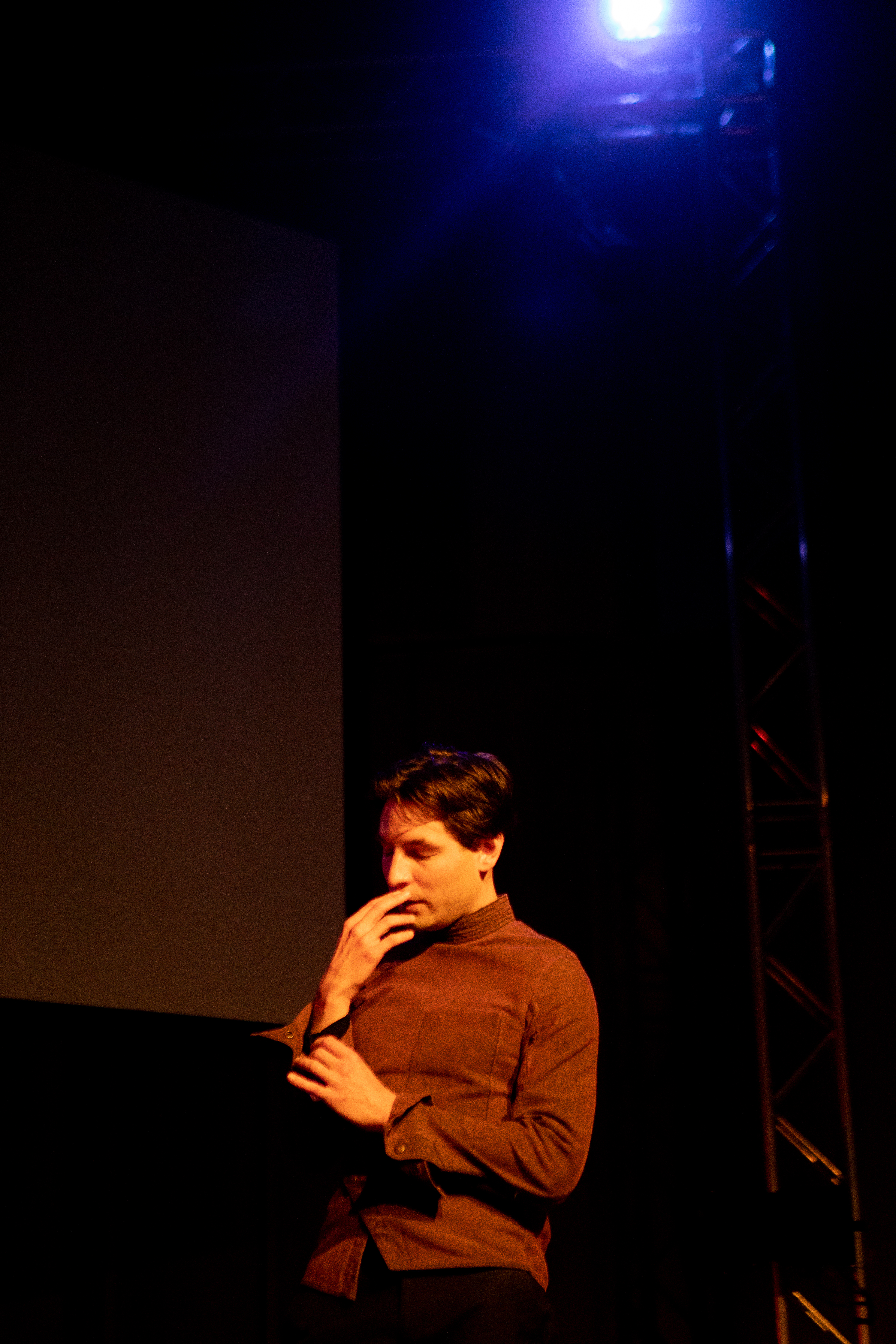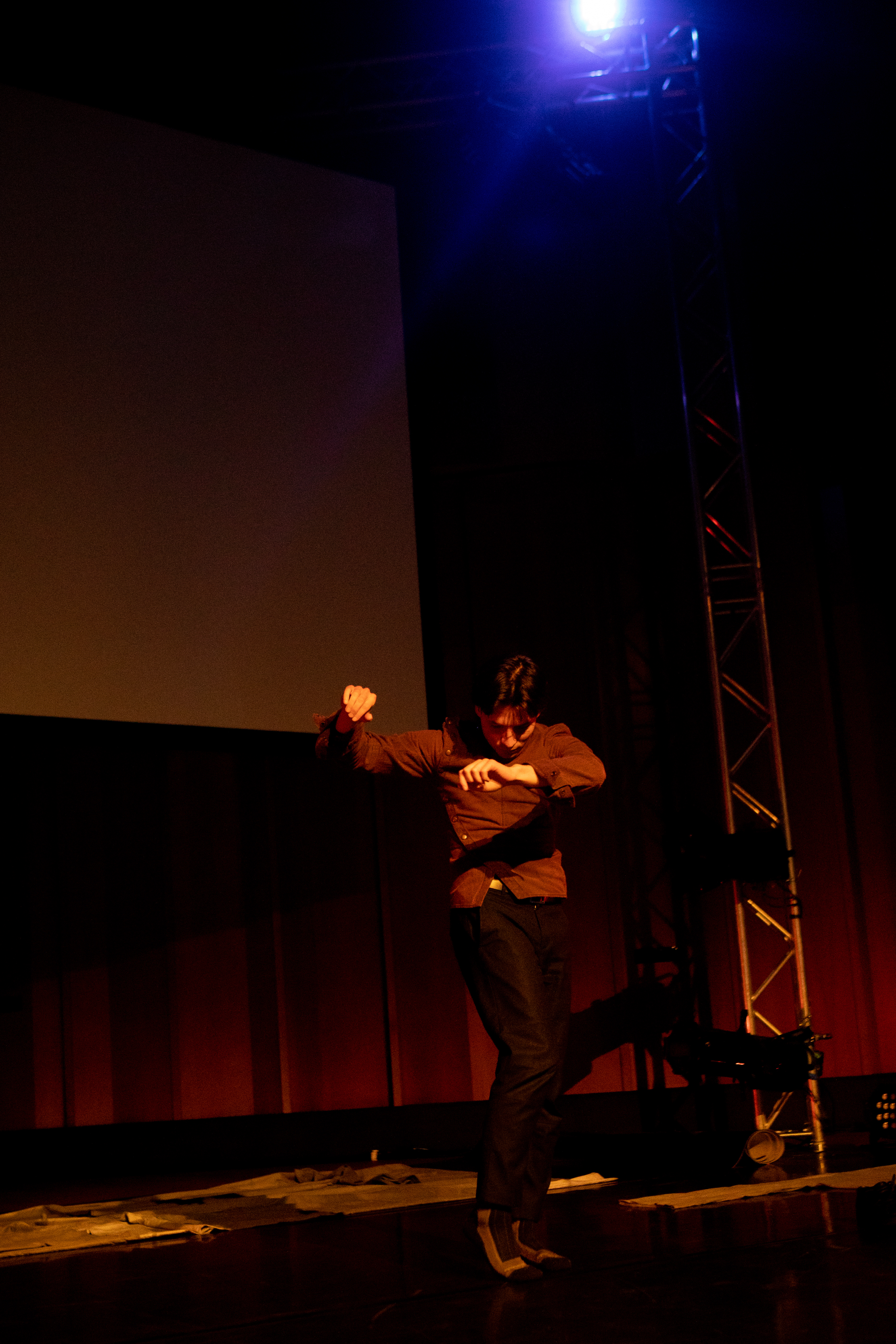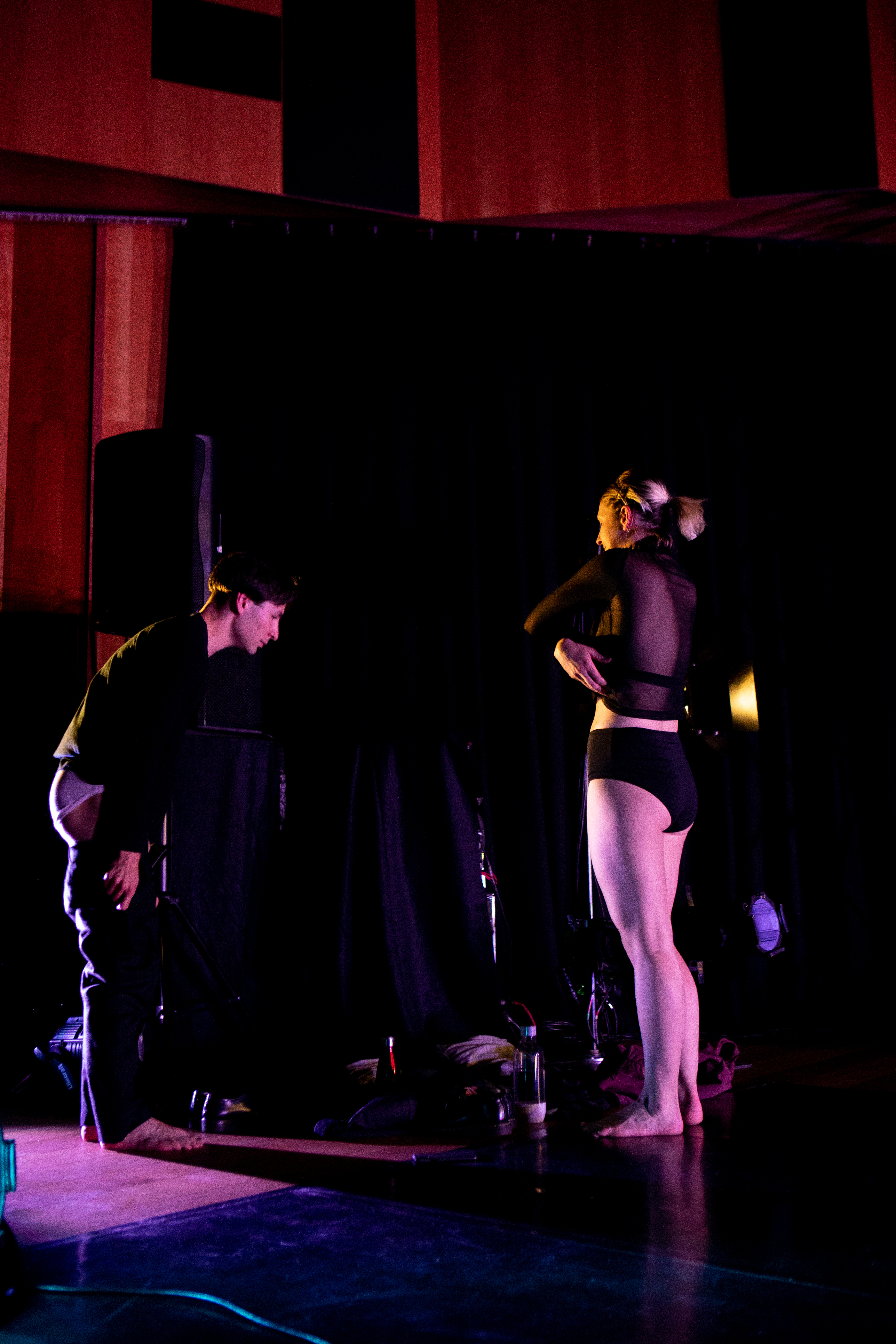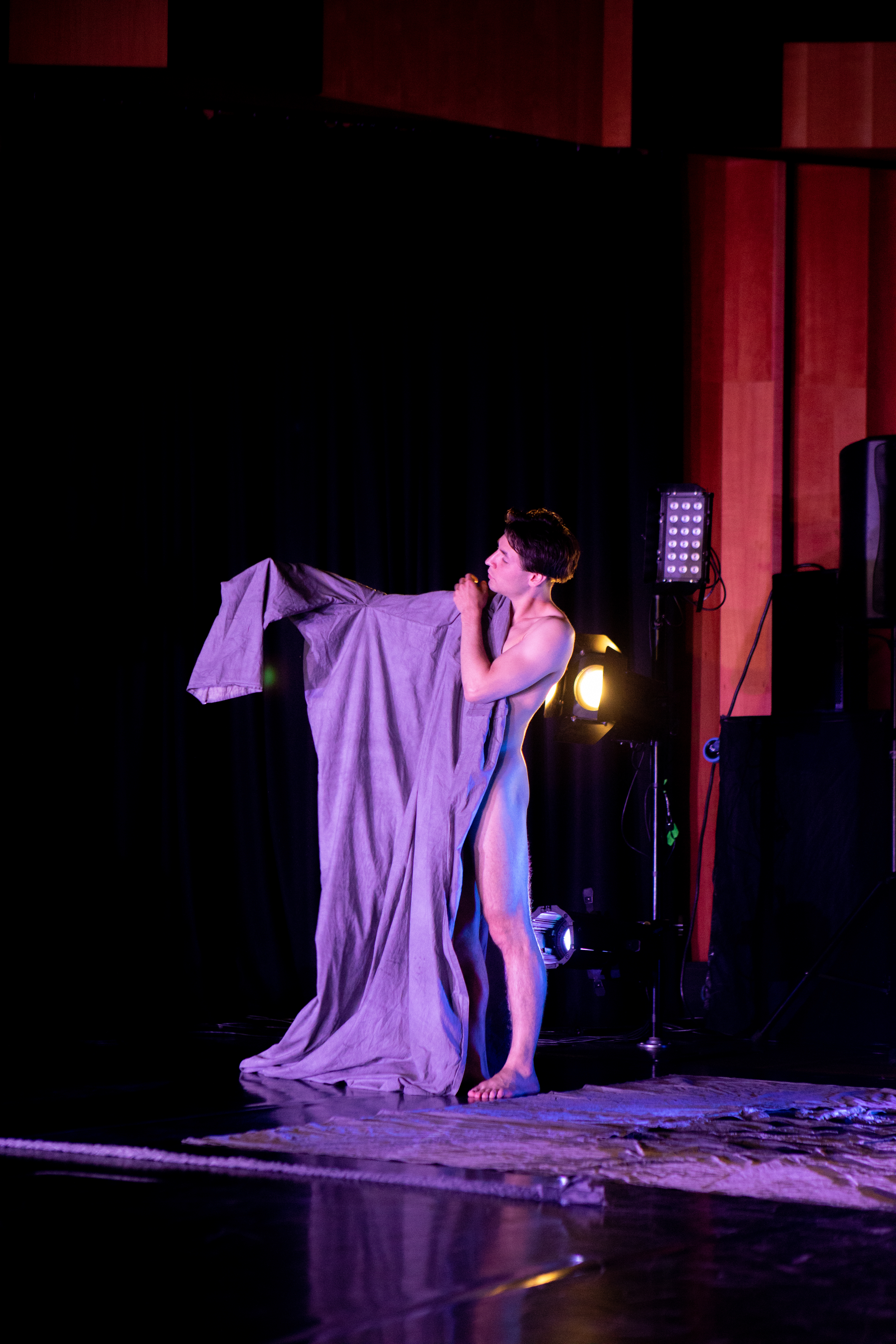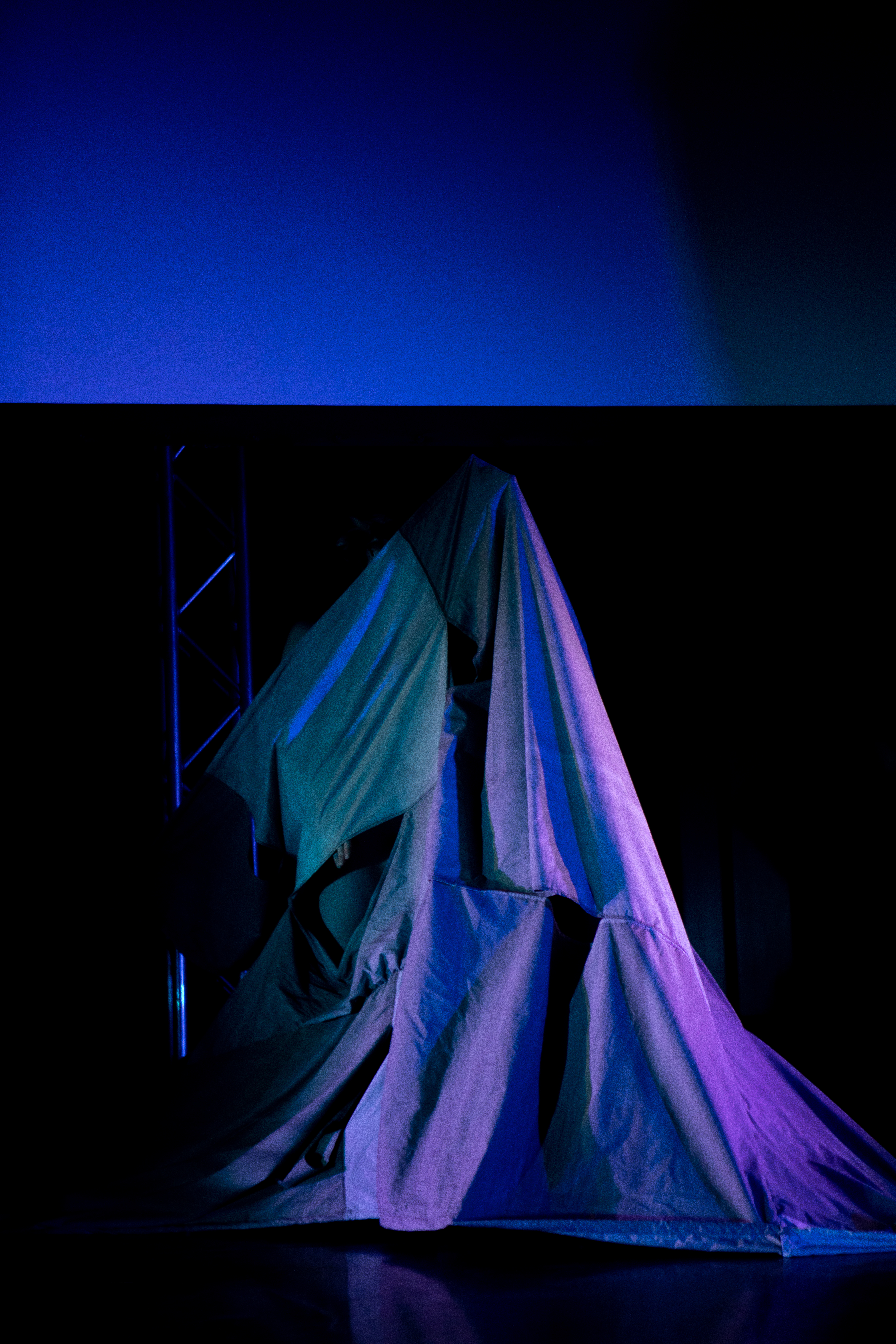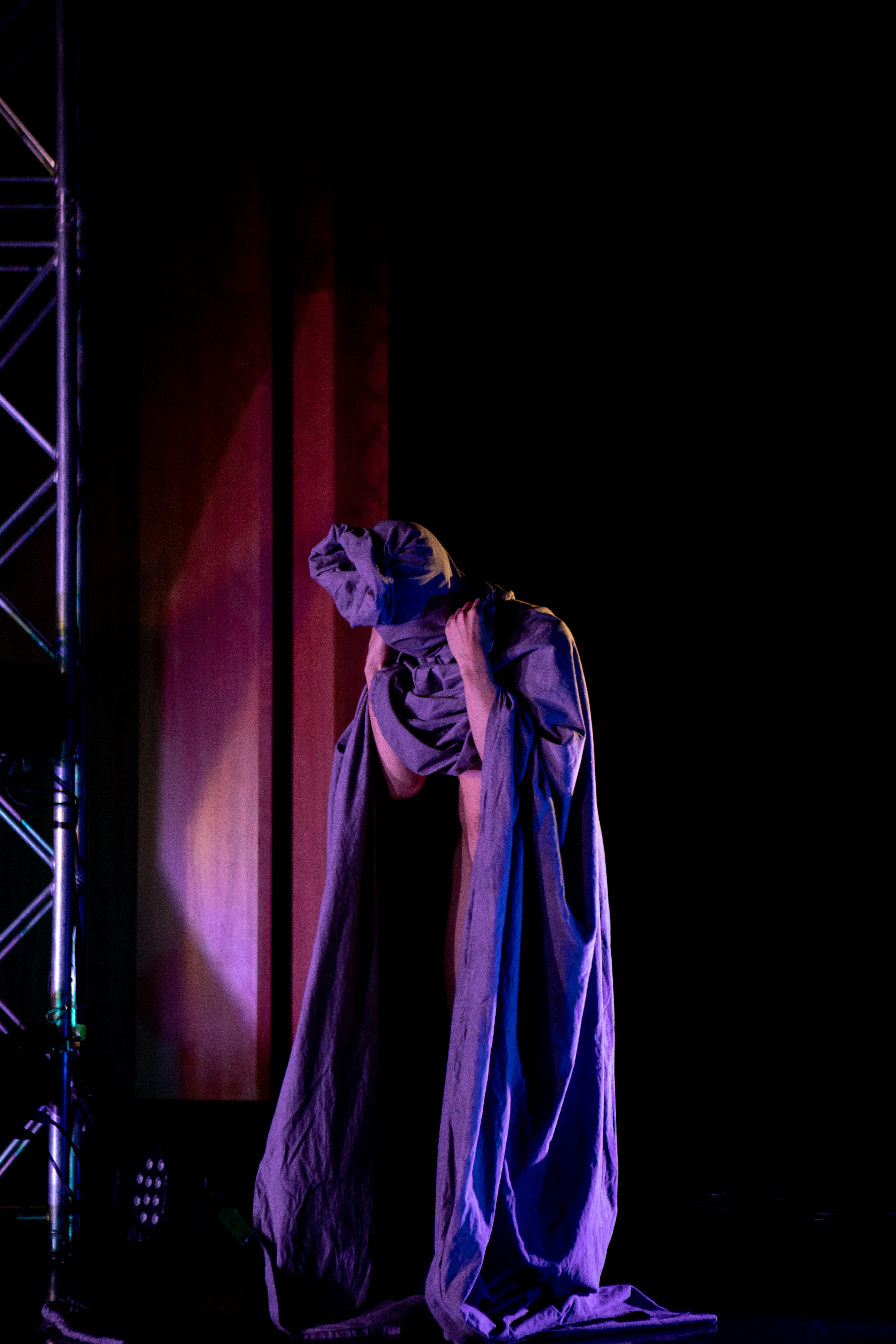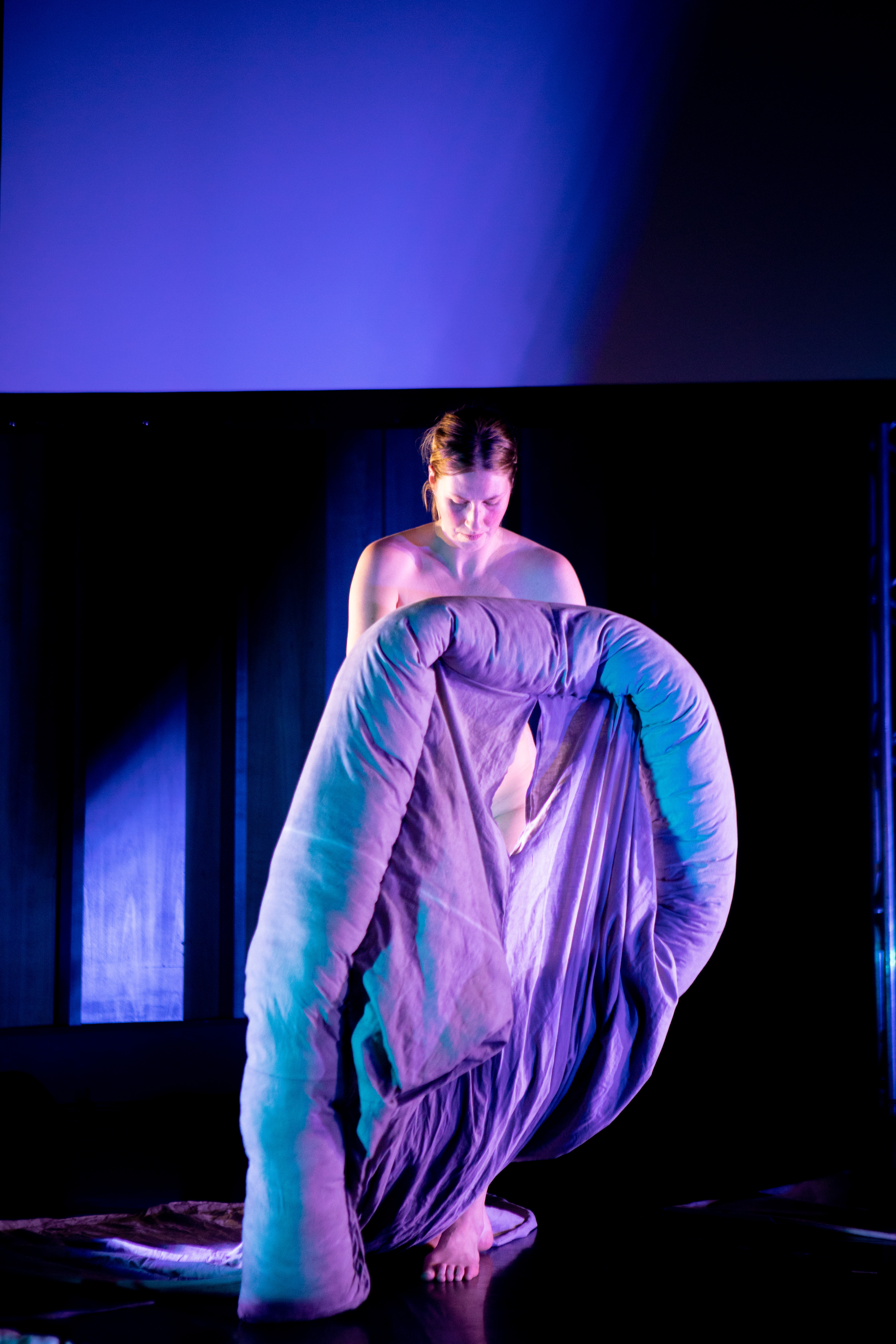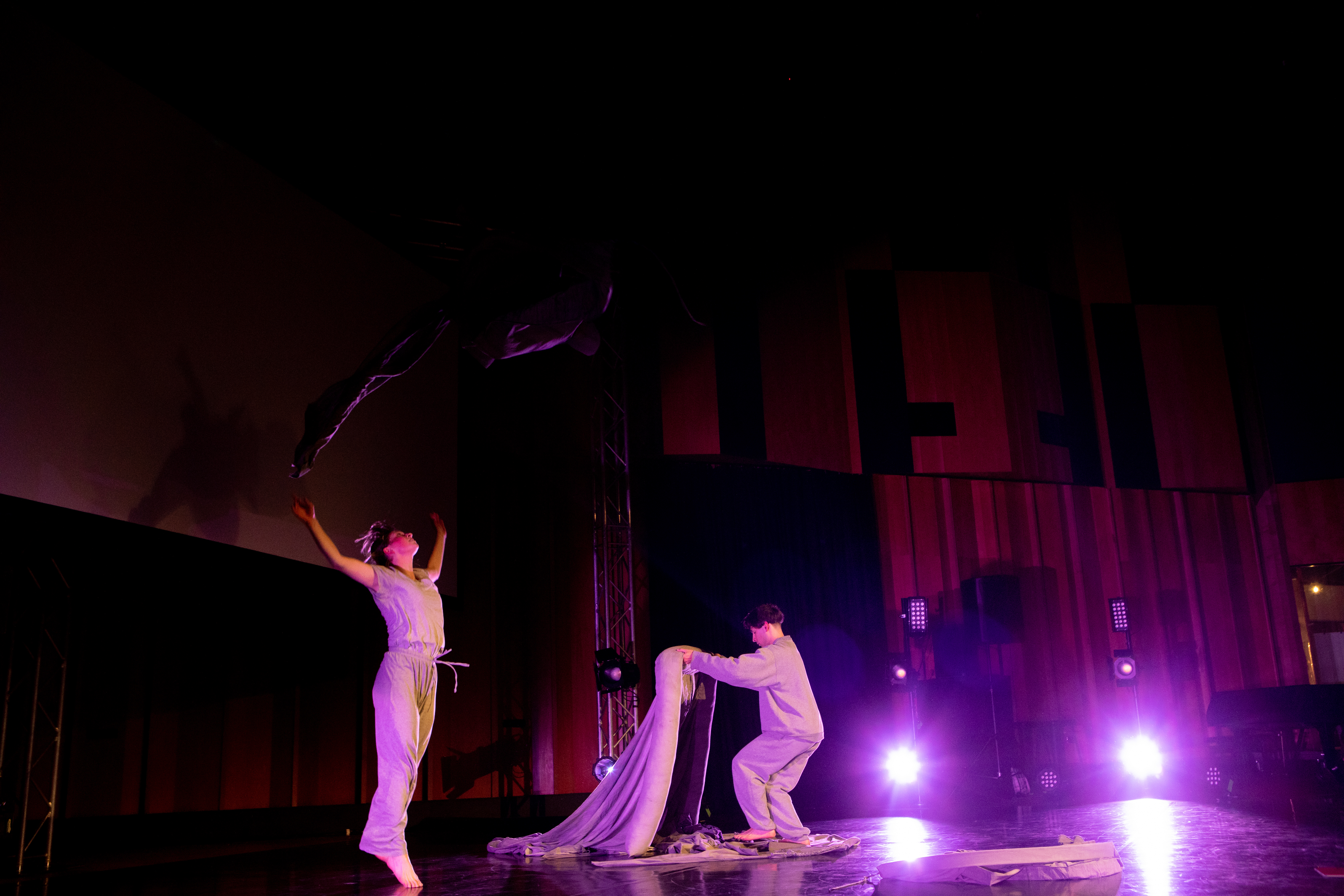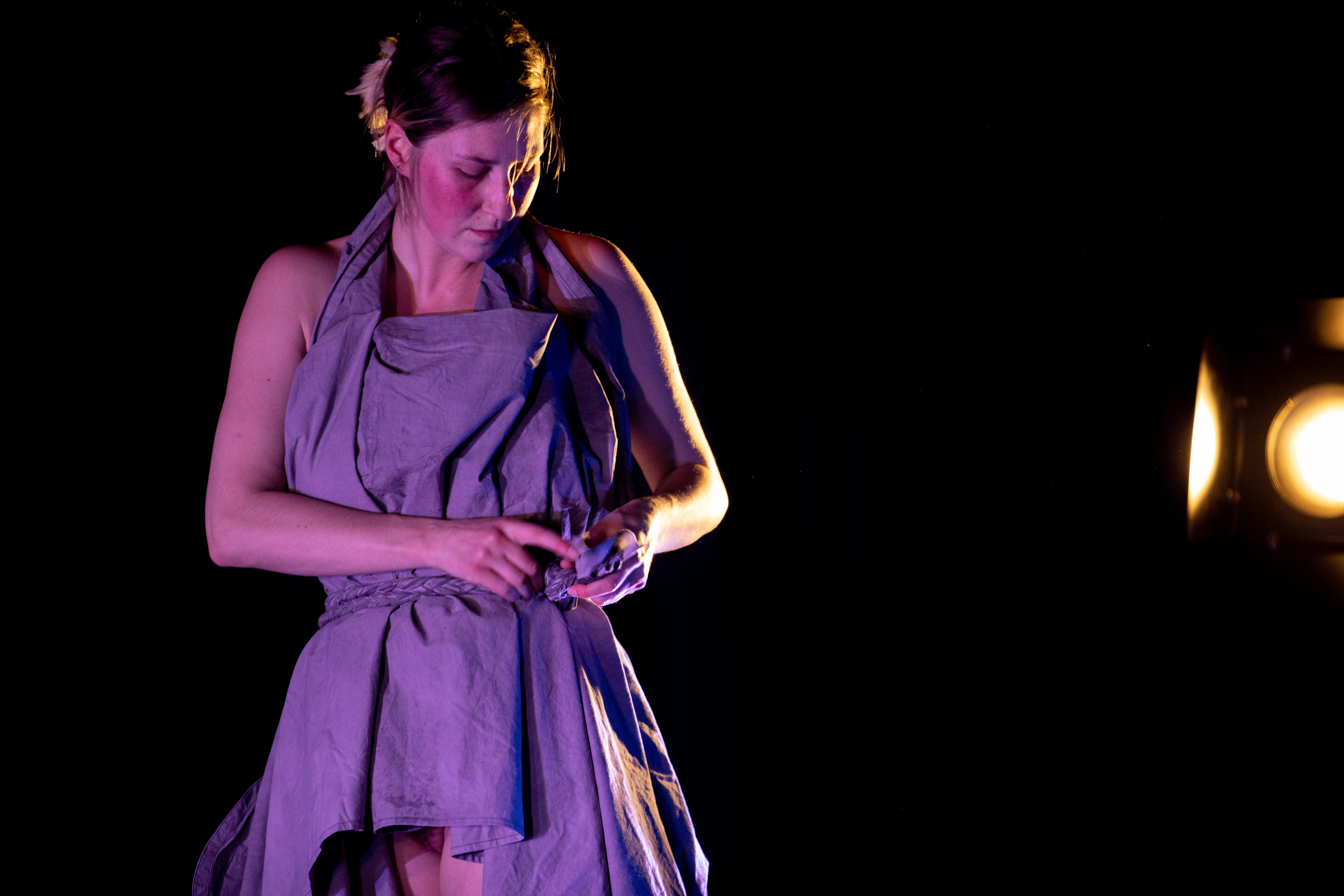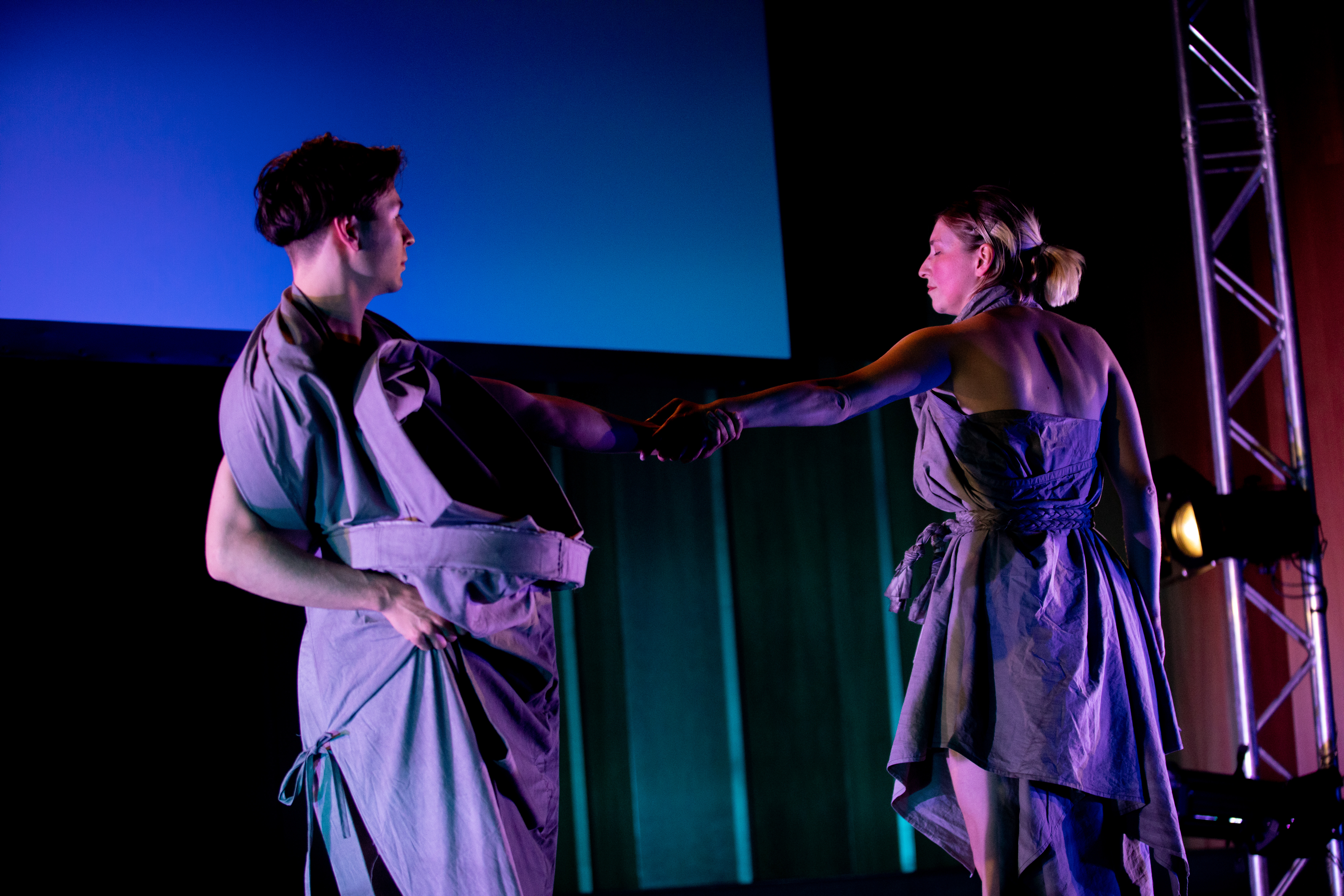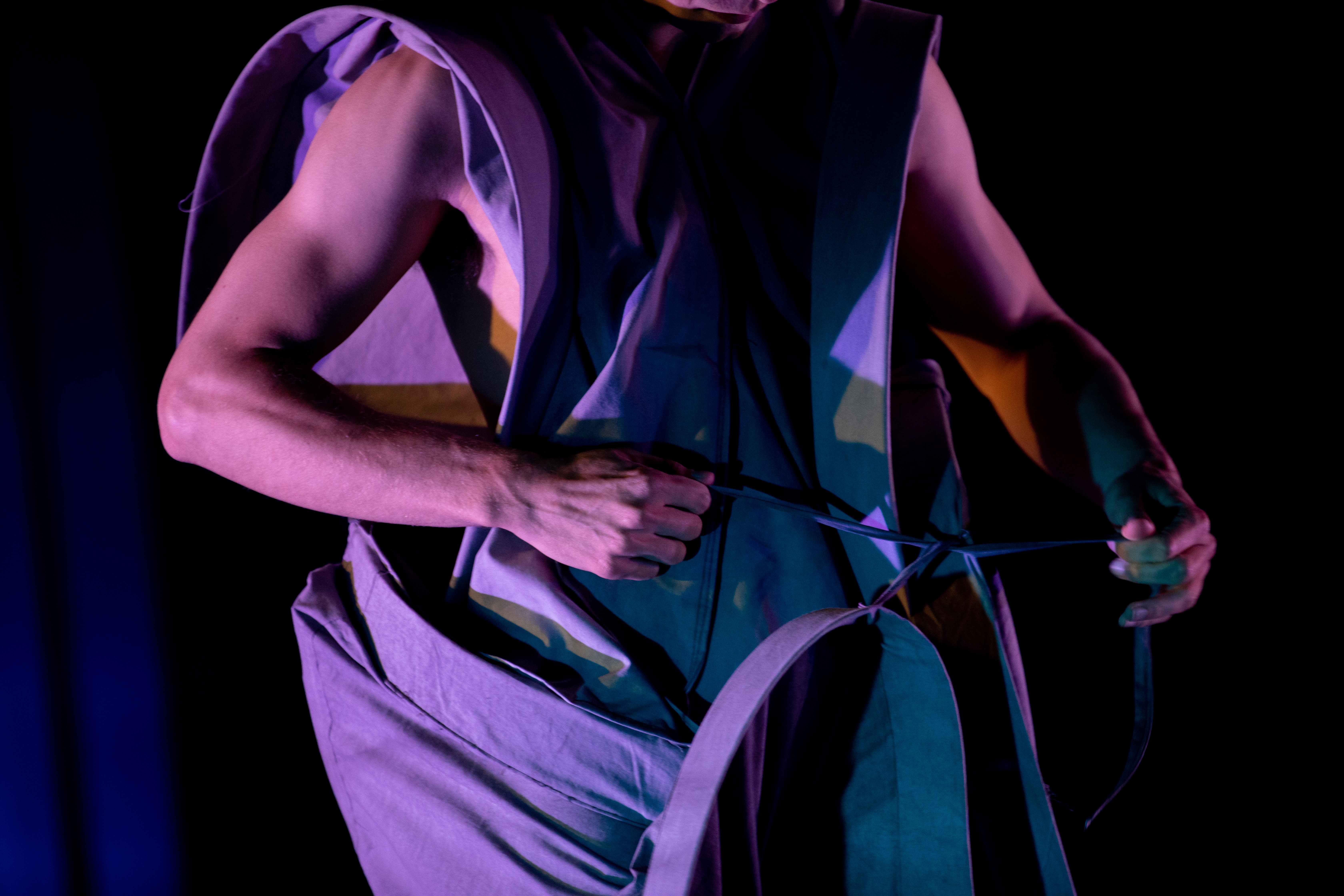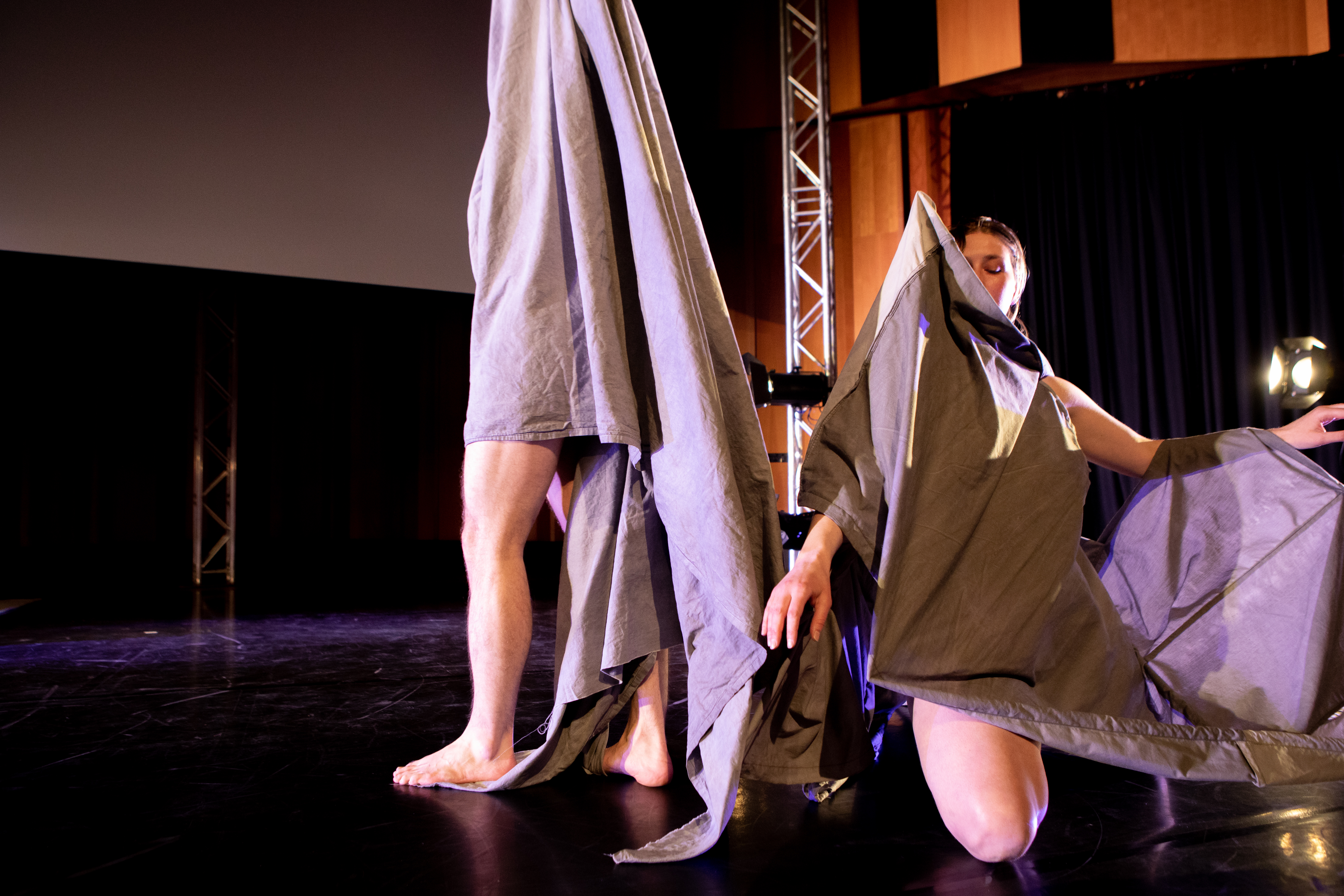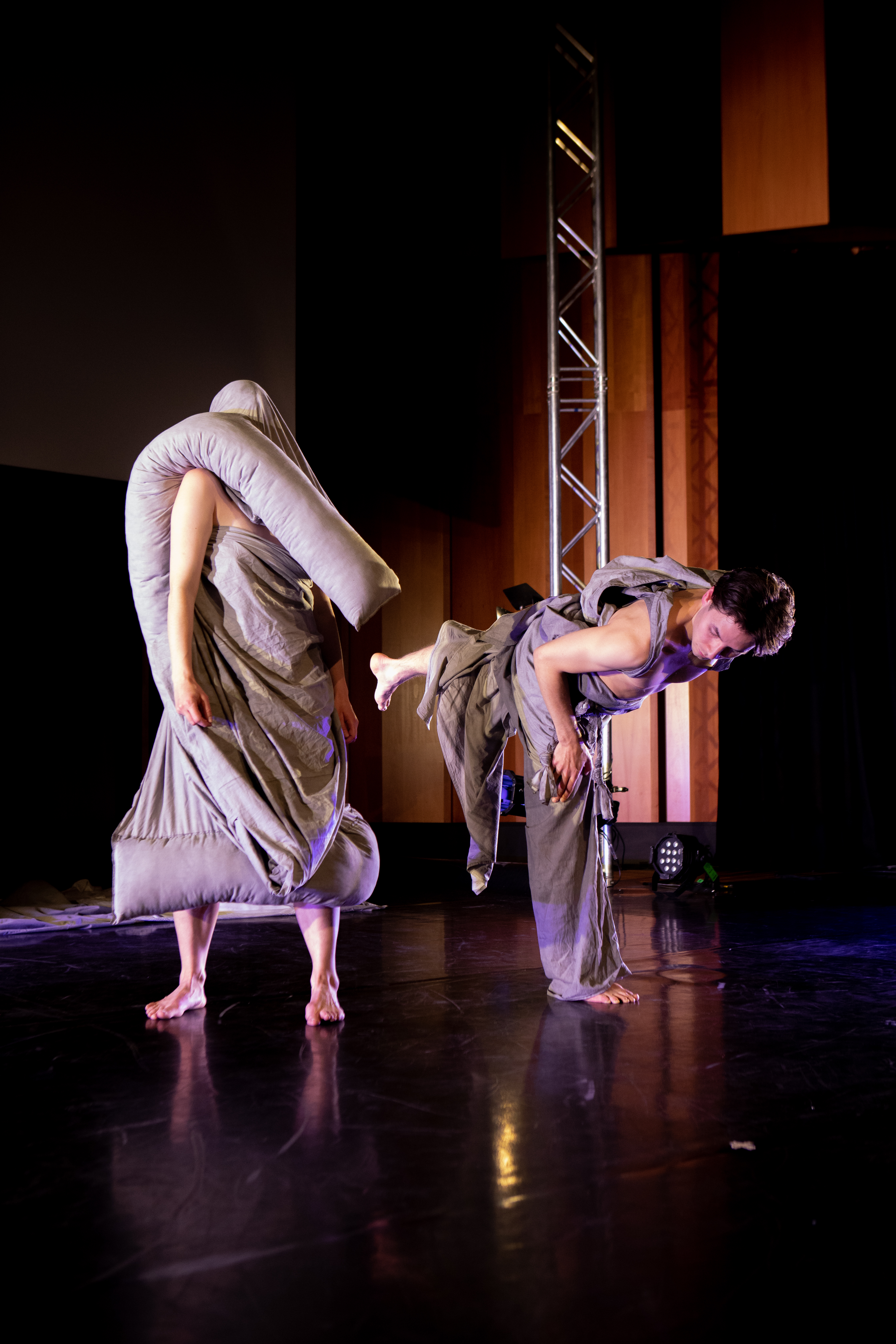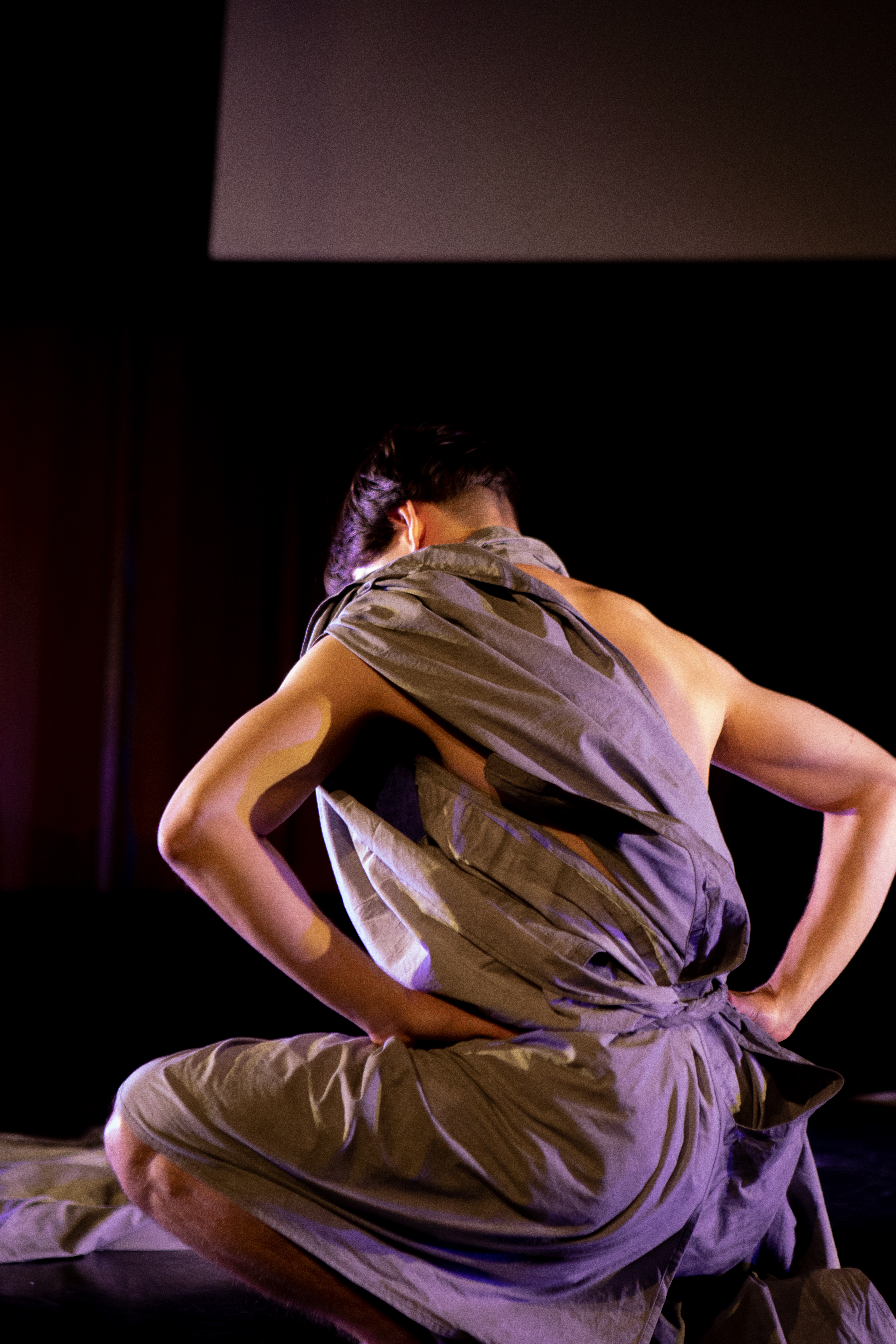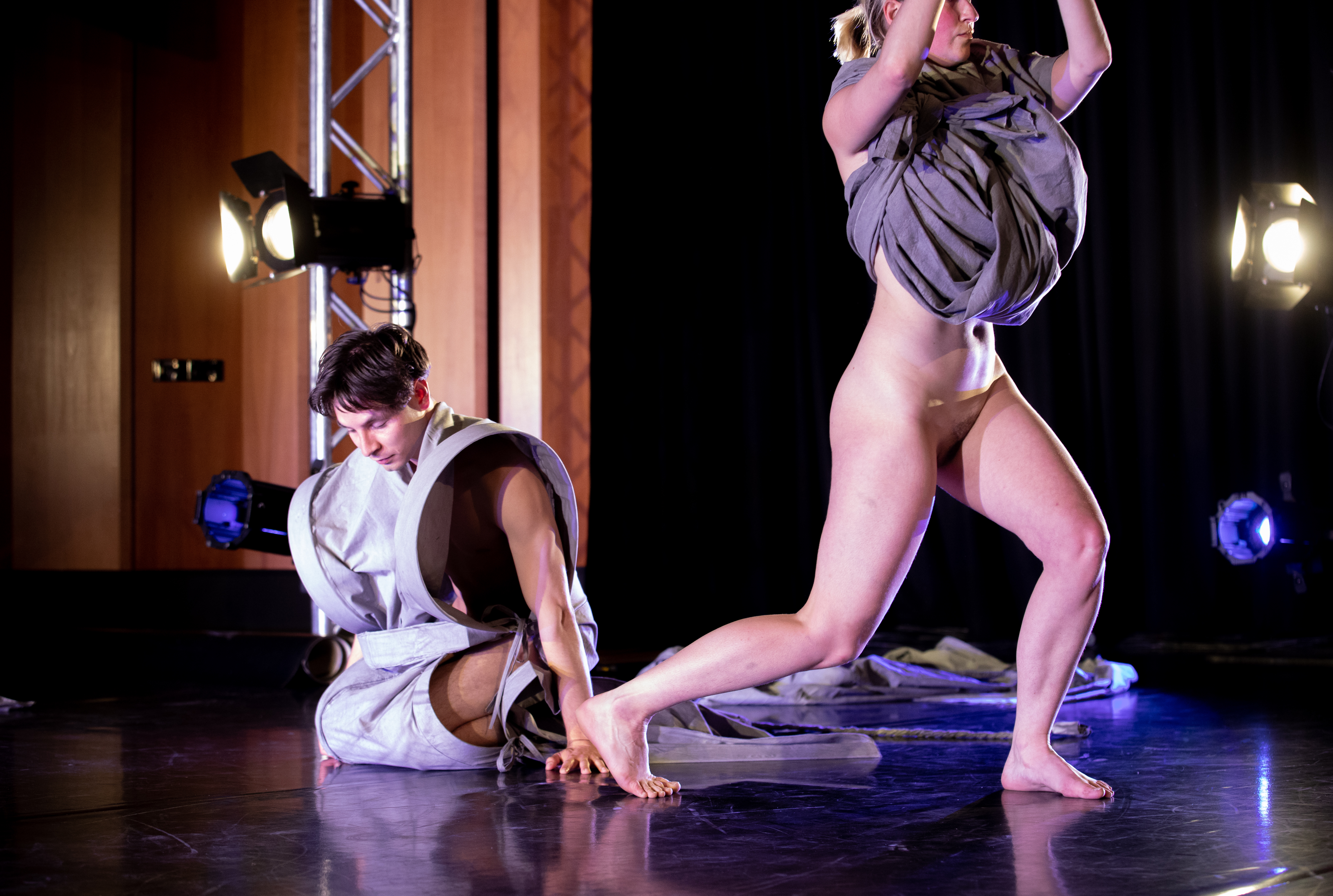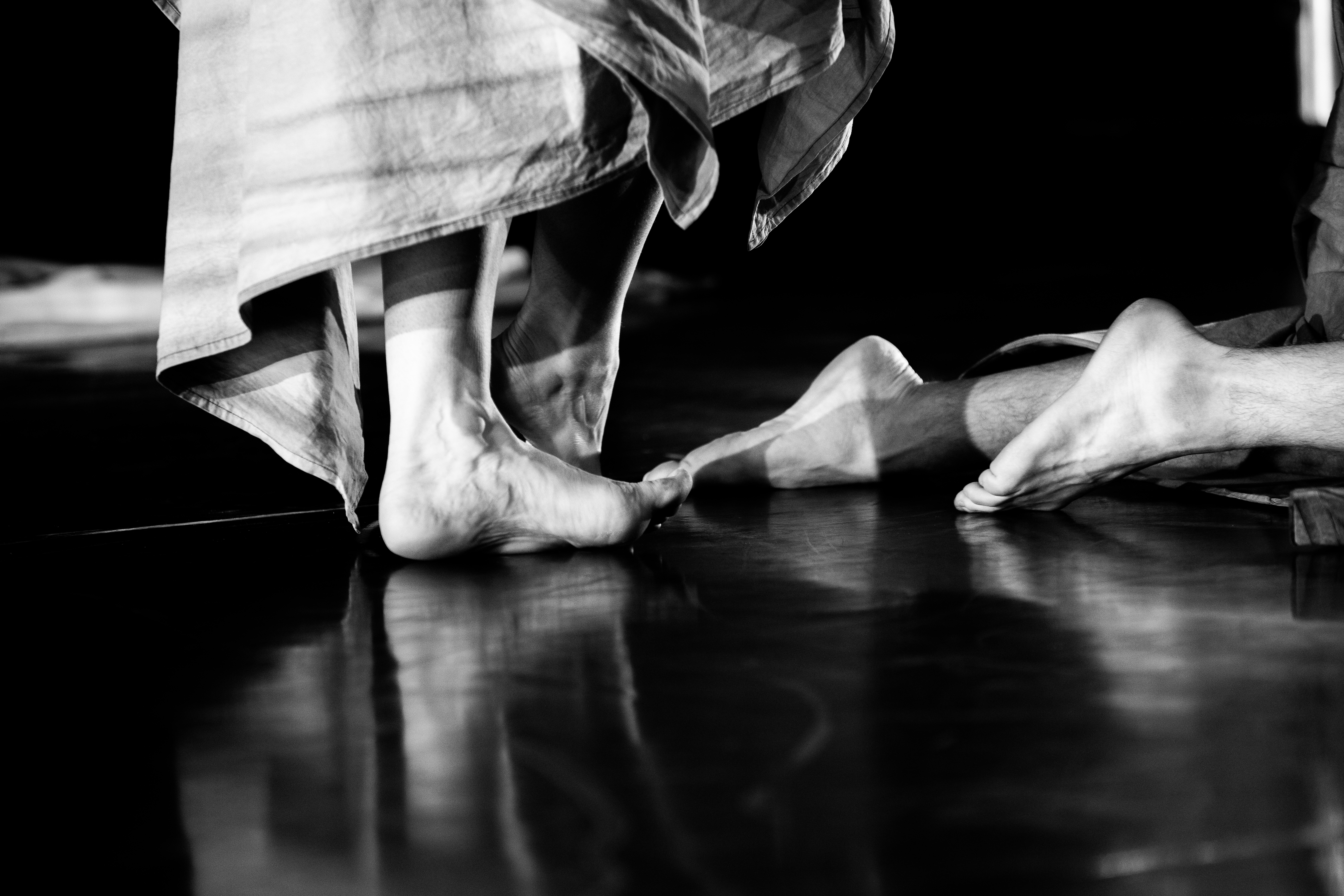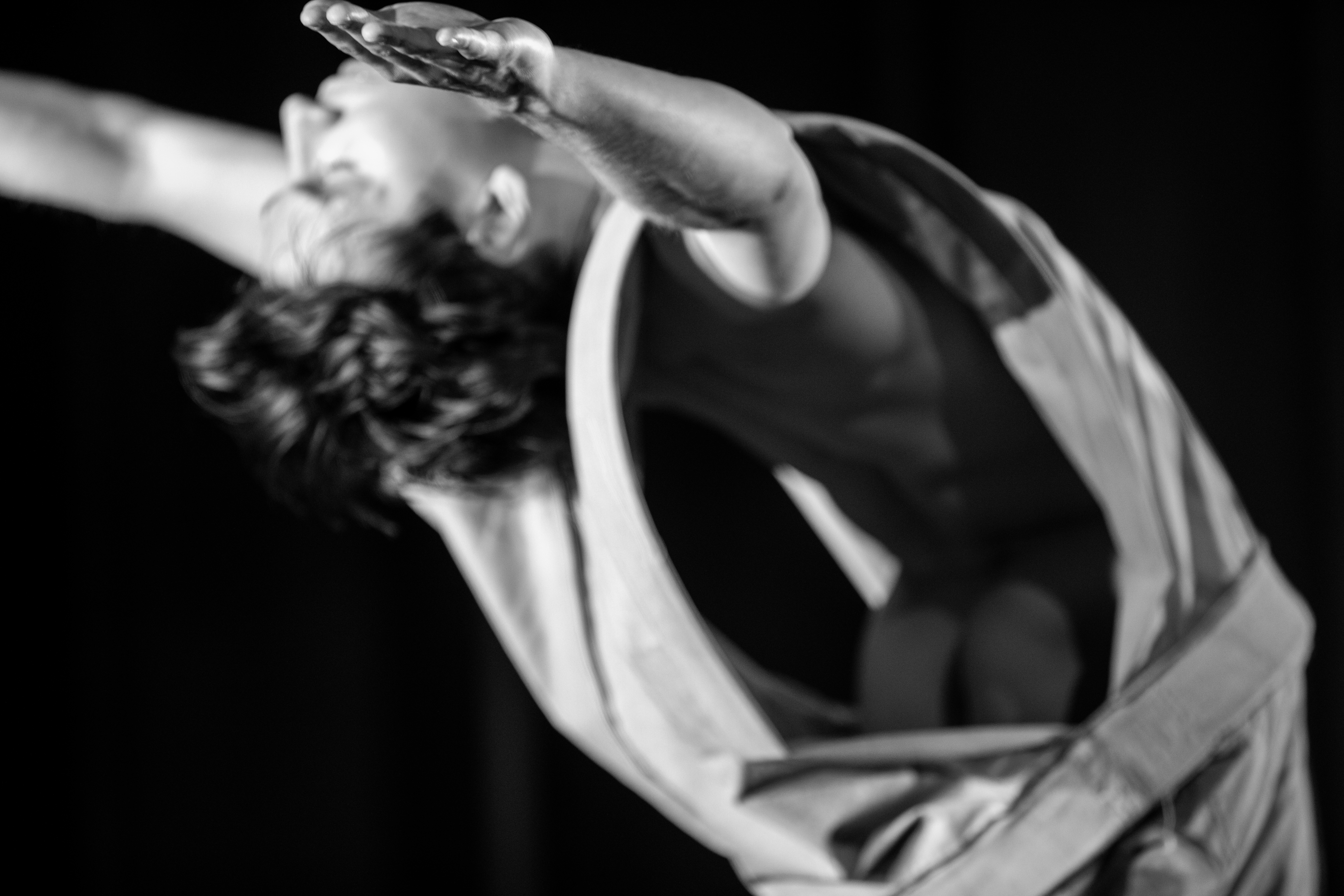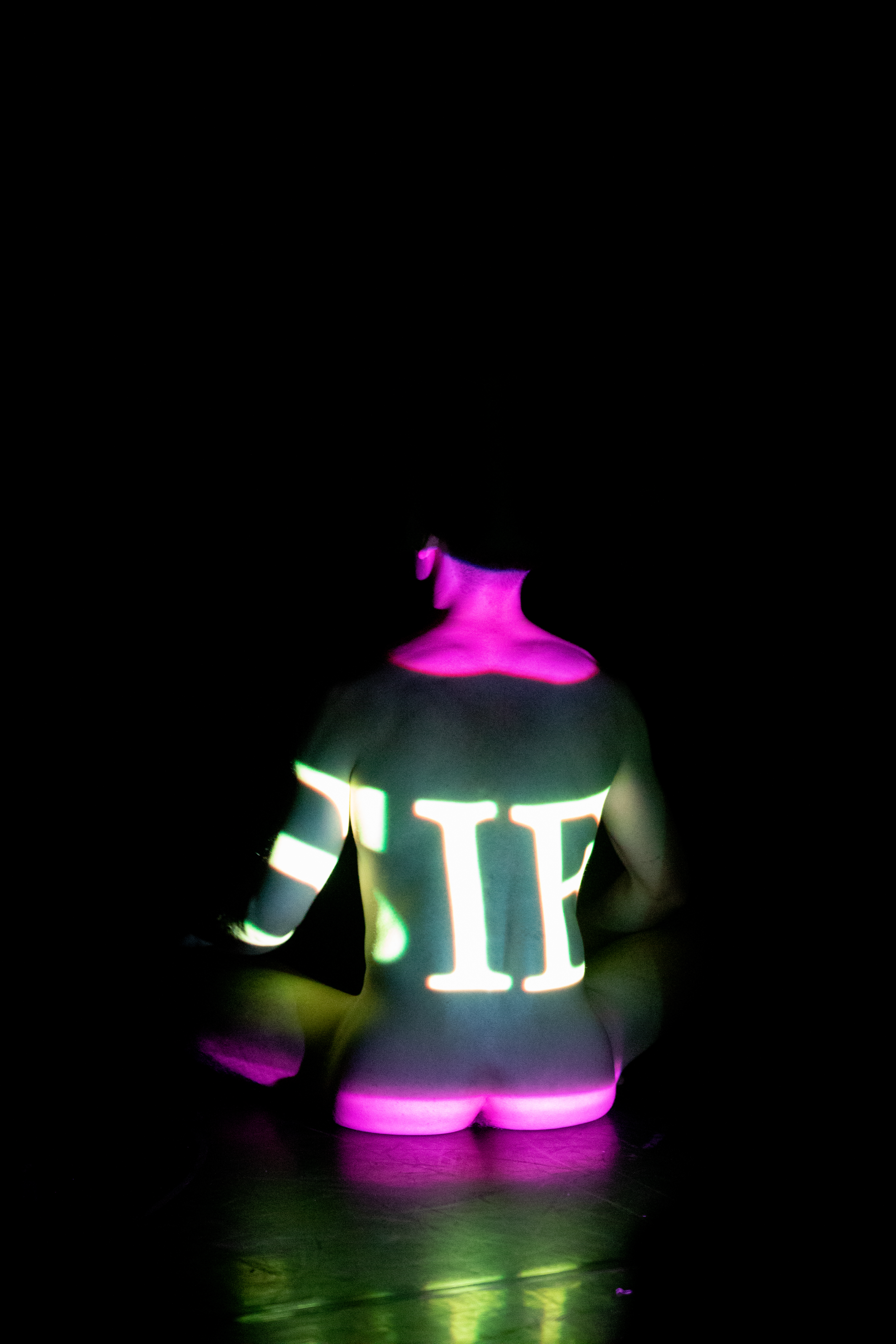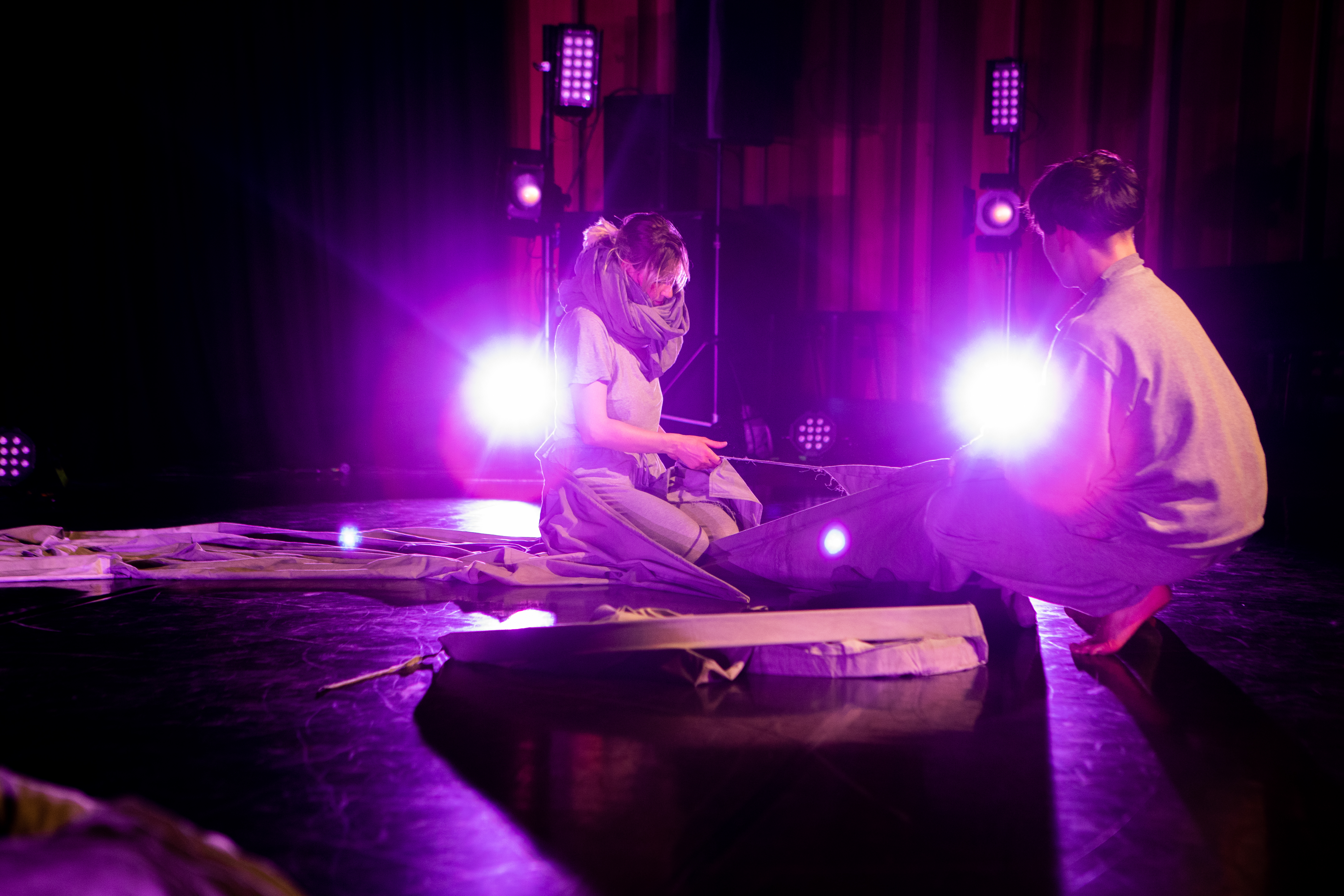PRESENT-ING (WORKING TITLE)
Our collaboration with designer, Steven Park (6x4)
1. Introduction
Good evening. Thank you for coming. This performance arose out of a desire to collaborate between ourselves, Josie and Kosta, and our friend, Steven Park. It is a coming together of the two mediums we respectively work with, dance and textiles. To preface the work we’d like to read for you a 500 word text we wrote for the Tiny Fest Web Journal that was also published in the MAP inhouse publication. It reads as a contrived interview between ourselves and Steven.
2. Read 500 word text
3. Choreographing clothing
This next part is a performance score that reads as follows,
Share what memories your clothes contain...
And then for 4 minutes dance with these memories in the act of creating a new one.
After we’ve each had a turn we’ll continue with the rest of the show. Thank you again for coming.
500 word text
Steven:
Anything can be clothing. If you put textile on the body in any configuration, it becomes clothing. This is a very simple concept that is wild in its potential.
Kosta:
There’s a lack of criteria in the contemporary dance context. It gets its bad rap from a dreaded feeling of something to ‘get’ from such an abstract art form. Josie and I like to choreograph by making conceptual choices that imply meaning. It feels generous to give the audience performative offers that are open to interpretation. Clothing already seems like such a fruitful place to work from because it’s so laden with content to mine. Clothing is so loaded.
Josie: Yeah, I’m definitely realising just how much clothing communicates. Everytime the body (the performer) is in relationship to anything other than itself there are so many questions that arise as a viewer. How does the person feel about it? How did they get here? What are they trying to achieve?. Kosta and I have been playing with the performing body on it’s own for a while, dealing mainly with the body in relationship to the inescapable stuff like movement, gravity, anatomy, thinking, space, time, and costume just a little bit. Collaborating with Steven and the clothing/garment in this way is wild and very exciting.
Steven:
Making clothing is quite technical. It requires a lot of practice and skill, which doesn’t leave much room for abstraction and spontaneity. I am curious to see what happens if the design process starts from two bodies in movement, rather than a mannequin or a sketch. I find that clothing often feels quite rigid in its adherence to established conventions; there is little room for interpretation. When it sheds these conventions and expands into the abstract there is a visceral fascination from having the body clothed in something that is difficult to identify.
Kosta: Questions I have are: Are we choreographing clothing? Who’s wearing whom? I feel like I’m wearing ‘contemporary dance’ sometimes and at the heart of its avant garde history is transgression and so to honour this tenet, to truly do contemporary dance, is to shed it, to undress. I think its practices make great tools and are there to facilitate creativity which is why, in theory, contemporary
dance eludes form.
Josie: Because we’re constantly moving - away, breaking, rejecting, shedding, and questioning, I keep coming to a place of ok.... But where are we going? What are we moving towards? What do we want to actively build at the same time as we are undressing? That’s what we’re in the process of doing at the moment. What do Kosta, Steven, and I have to do with/say about it?
Steven:
There is a lot of emotion in textiles. It is something that everyone deals with on a daily basis, regardless of whether or not they want to spend much time thinking about it. It’s one of the identifying characteristics of our species, but we rarely think of it in this way. I think we can be reminded of this human phenomenon in moments where clothing conventions explode out from the mundane to reveal the emotional and physical range of textiles. We see our humanness reflected in the way we clothe ourselves, and do not live in static bodies. I think we can find a lot about human communication and connection in the space between our practices.
Josie: There’s the work and then there’s the people behind the work. We can’t escape the fact that our friendship and love for one another brought us here. Making art is such a vulnerable thing to do let alone to do with/ in front of other people. We’re introducing ourselves with this work, to each other, what we know and don’t—a blind date with the gestalt.
Kosta: Clothing seems so personal but I’m noticing in the studio how much it is outwardly collective expression. Comfort in one's own clothes is a psychosomatic concern, far more complex than the tactile.... Socio-somatic? Yes. I’d like to think of the work as a socio- somatic exercise for us and for the viewer because dance and clothing are cultural visual stimuli that elicit visceral-intellectual/body- mind responses.
